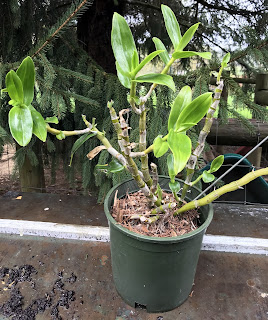 |
| Repotting #1. New Growth. |
I had lost enthusiasm for the
Dendrobium hybrids, in 2016, and left a few in the compost pile. Then I saw they survived the summer, and my enthusiasm renewed. So I put them back into containers. This one, in particular, was eaten by slugs that year, and in 2017. This winter, I placed the bare-cane plant in the sunroom, put some organic slug pellets on the bark chips, and mostly left it alone. It regrew, mainly keikei (new, removable branches with their own aerial roots), so I decided to pot it into a more appropriate (smaller) size container, with new orchid bark medium. The roots looked healthy, but didn't fill the pot, so I chose a smaller size container. A keiki fell off, so I potted that as well. I don'tt have the label, but by the process of elimination, I think it
might be the variety
Love Memory "Fizz". I've had it at least 8 years.
As part of this new enthusiasm, I also ordered 4 new
Yamamoto dendrobiums, direct from the hybridizer / creater,
Yamamoto Dendrobiums in Hawaii. I chose that route, despite shipping expense, because I thought the plants would be better than from a secondary supplier. I think I was right.
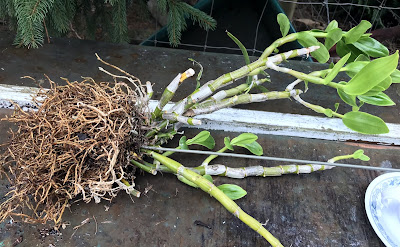 |
| Repotting #2. Out of Container. |
I ordered the following varieties:
Mellow Heart "Yellow Mind"
Fancy Lady "Royal Princess"
Red Emperor "Prince"
Oriental Smile "Fantasy"
The nursery also sent a start of a bonus plant, "
Wave King "Akebono"
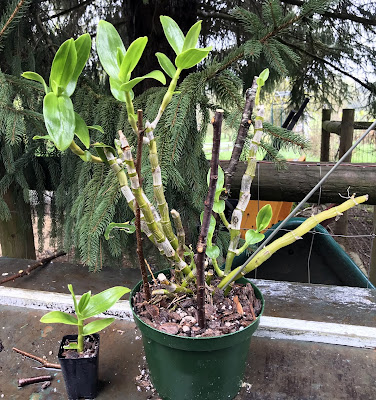 |
| Repotting #3. In New Container, and Potted Keikei. |
I also repotted all of these new plants into slightly larger containers, in the same new bark medium.
Of my older Dendribiums, I don't know the name of the one that was left to founder until I rescued it from myself. I'm pretty sure the flourishing white one is called
Spring Dream "Apollon" and the pale pink one is called
"Fancy Angel "Lycee".
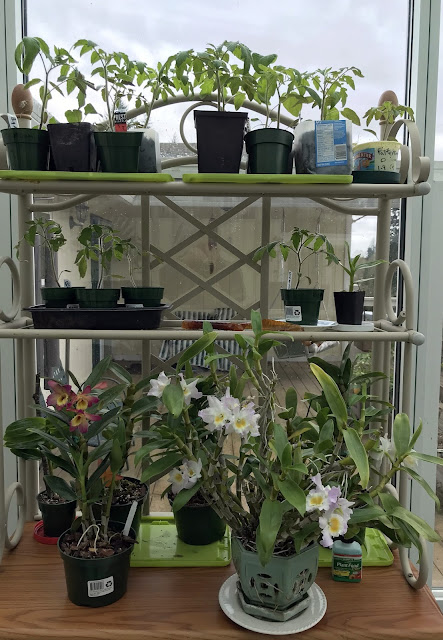 |
| Dendrobiums and Tomato Seedlings. 4.13.18 |
These do so well with the care that I can give in my climate. During the spring, summer, and fall, they will be outside in full sun. I intend to do better this year, and water more frequently, but they survived previous years with rare watering in the summer. I also intend to give some plant food this year. It's not organic, but my choice this time is the diluted "Schultz" houseplant food, for convenience and the ability to give with each watering in dilute form. When it appears that frost will come soon, I move them to the sunroom, give occasional water, and they bloom like crazy.
Sometimes they will also bloom at odd times, which is all the more welcome.
On the Yamamoto site, these orchids are pictured ready for commercial sale. They are greenhouse grown in Hawaii, and bunched together for dramatic presentation. In my SW Washington setting, they are not so lush, nor so prolific, and that's fine. I can't believe how prolific they are, and how beautifully they bloom for me, with such minimal effort.
This being April, the rack also has tomato seedlings. They are a little bigger than I want this time of year, but will be fine.
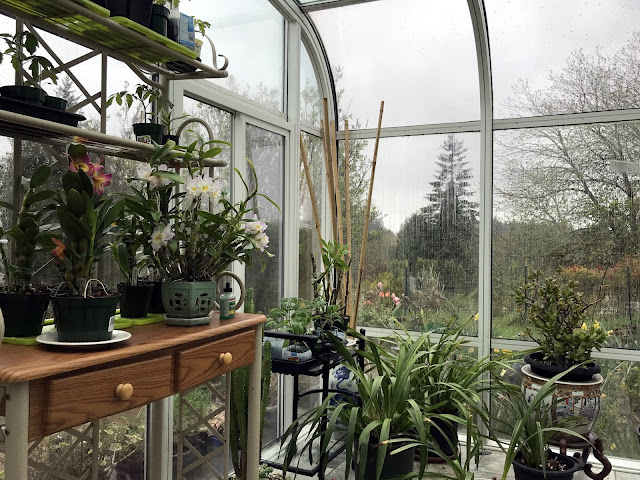 |
| Sunroom, South & Southwest Views. 4.13.18 |
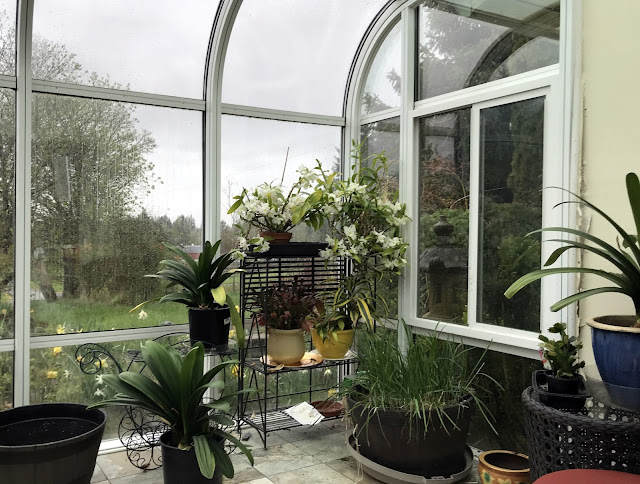 |
| Sunroom, West View. 4.13.18 |






















